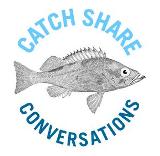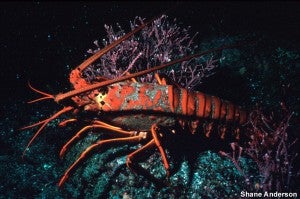This past Sunday, the New Bedford Standard Times published a set of three articles that gave insight into the progress of sectors (group catch shares) in Massachusetts.
There is good news in the articles:
- The fishermen who are fishing are seeing higher revenues, while others are waiting for prices to increase, a strategy they are free to employ under this system.
- Sectors such as the one in New Bedford, managed by David deOliveira, are working together to manage their allocations of scarce stocks to “keep everyone fishing.”
- Leasing allocations is of real value financially to fishermen considering retirement.
The articles also highlight improvements to the sector system that can and should be made as well as the challenges associated with low catch limits, which is entirely unrelated to catch shares. Many of these issues are currently being discussed by the industry, the New England Fisheries Management Council, and conservation groups.
Many opportunities identified in the articles are a function of how the catch share was designed. Catch shares can be designed to accommodate the communities that depend on fisheries.
Catch limits
As Don Cuddy’s article points out, “Many fishermen believe their economic woes are not a result of sectors or any particular management system but from catch limits that they believe are set artificially low.”
The 2010 catch limits were developed based on NOAA’s best available science. But carefully targeted investments in science and scientific processes – including those outlined by Senators Kerry and Snowe in their recent appropriations request — can provide relatively quick improvement in assessments of key stocks, and may well increase allocation of certain stocks.
There are several design elements that can help the fleet through times of low catch limits. For example, the Pacific groundfish fishery held back ten percent of the quota for “adaptive management” and has already dipped into that quota to provide additional allocations of a particularly weak stock—canary rockfish—for fishermen who lacked enough to legally fish for other species.
Consolidation
In Steve Urbon’s NBST piece, he discusses the “consolidation of the industry.” While that is a concern, it has to be weighed against the consolidation of the fleet that was occurring under the previous Days-At-Sea (DAS) management system.
In the New England groundfish fishery, in 2001, 1,100 active boats used 65,347 groundfish DAS for an average of 60 DAS per active vessel. In 2007, 574 active boats used 32,804 DAS for an average of 57 DAS per active vessel. As the number of days fishermen were allowed out on the water dropped dramatically, so too, did the number of boats fishing.
There are design elements in catch share systems around the world that can alleviate some of the consolidation concerns while supporting fleet diversity, smaller ports, and small-scale fishermen with less access to capital.
For example, quota accumulation caps could be used to limit the amount of fish that any one participant has access to. The Interspecies Committee of the New England Fishery Management Council voted unanimously at its April 2010 meeting to recommend to the full Council that accumulation caps be developed and implemented for the 20 groundfish stocks managed under sectors. This action can help protect the smaller boats by preventing the fleet from being dominated by a few big players.
Limiting permit transferability, ownership and use is also used to achieve specific objectives. For example, some catch share systems require a certain percentage of the harvest to be landed in specific ports to protect the shoreside infrastructure. Other fisheries require quota owners to be on board in order to catch their share in order to discourage corporations from acquiring large amounts of quota.
Moving forward
Much of New England’s fishing community has struggled over the past several decades. Regulations meant to bring back once-abundant cod, flounders and other groundfish have instead squeezed the fleet’s profitability.
Sectors can help the New England groundfishery move towards an increase in fish populations; an increase in per-boat revenues; a dramatic reduction in bycatch and an increase in the use of sustainable fishing practices.
The New Bedford Standard Times has raised important questions and opportunities for improvement in the groundfish fishery. Now is the time to make refinements to New England’s groundfish sectors. There are many options and the best outcomes will likely occur when all stakeholders – fishermen, shoreside businesses, conservation groups, legislators, and Council members — participate in the process with the shared goal of creating a fishery with healthy fish stocks and thriving fishing communities.















